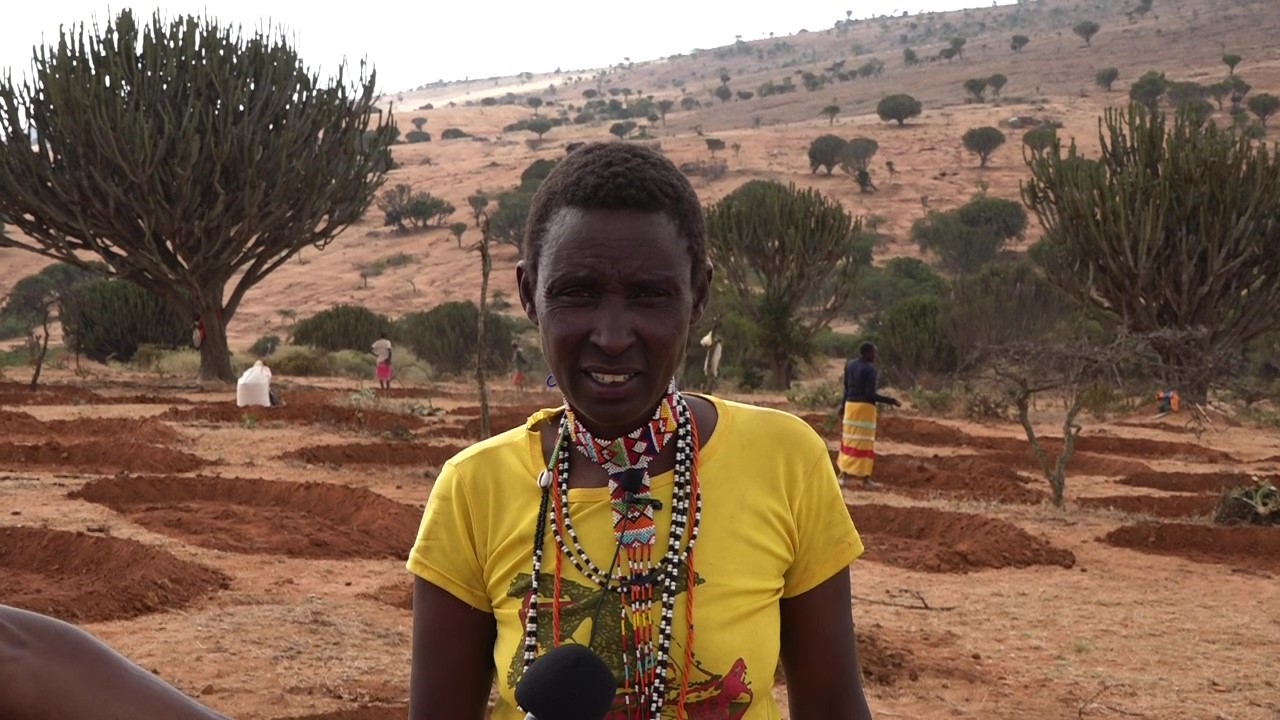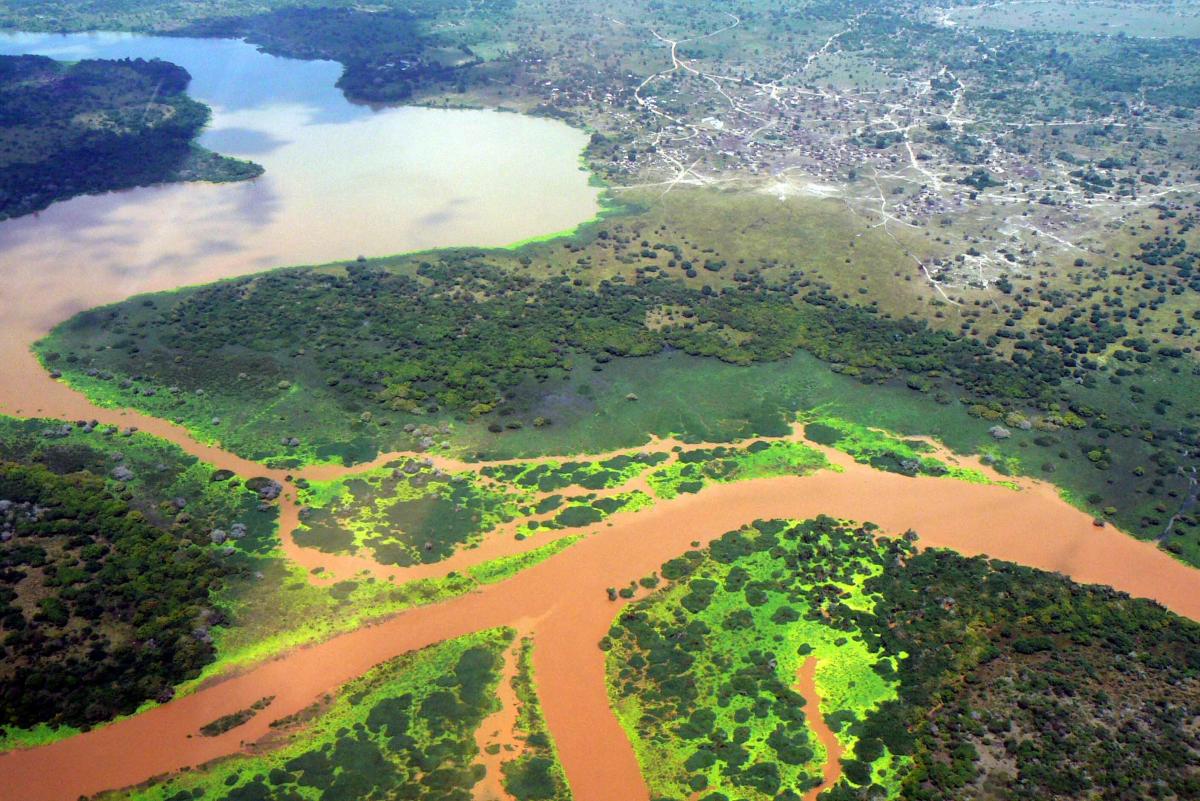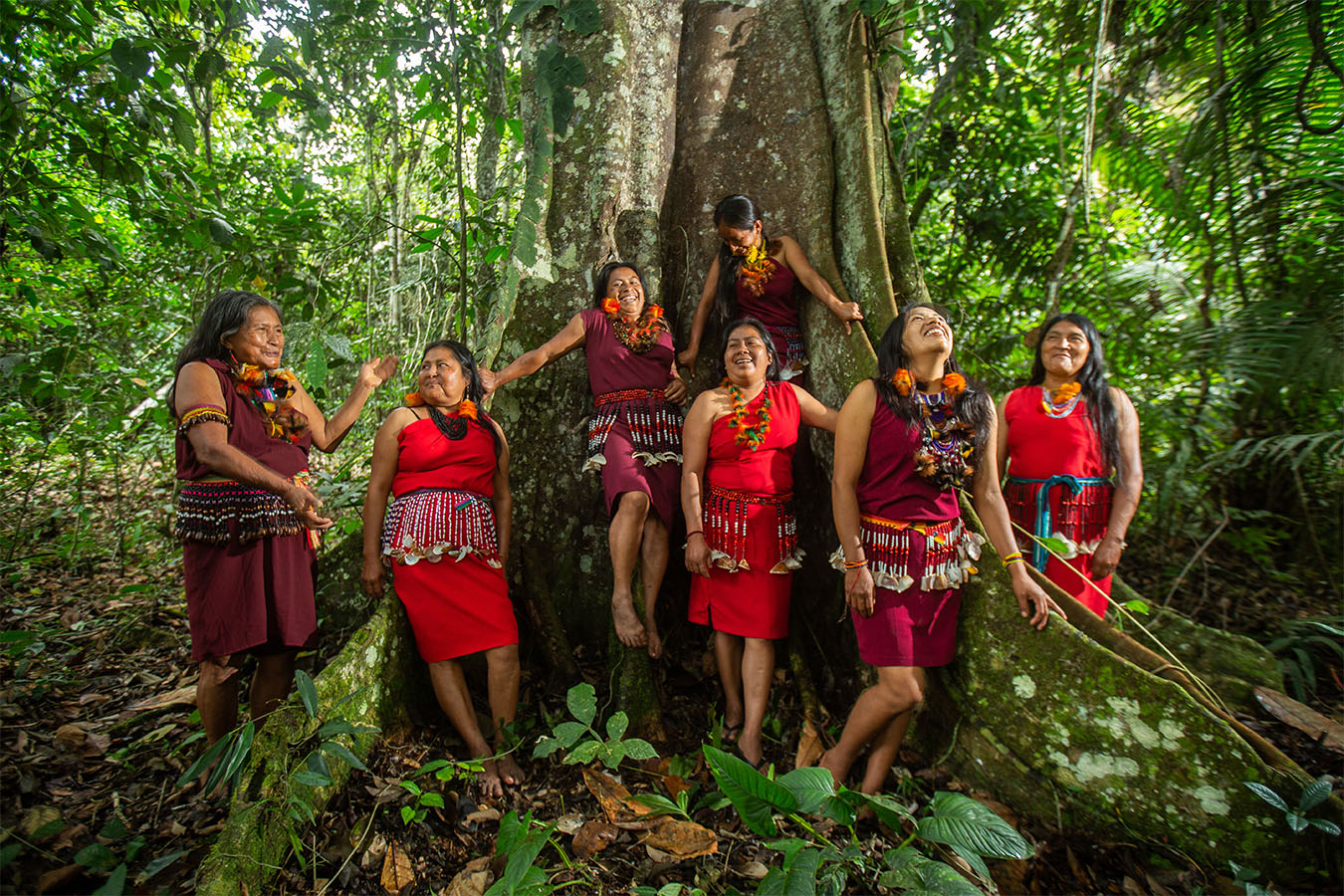The Restoration Initiative: A Kenya Tana Delta story
Securing the future of the Tana River delta, Kenya, with community-led restoration
With support from the TRI Kenya Tana project, CFAs are teaching residents how mangrove and indigenous tree restoration can pave the way towards a healthy and prosperous future.
Hundreds of mangrove seedlings stand tall on a patchy stretch of land in Kipini, a settlement along the Tana River delta in Kenya. The newly planted seedlings reach skyward despite the scorching sun above while Riziki Bwanake, a village headwoman who was born and raised here, delicately tends to the plants. Bwanake is a founding member of the Kipini CFA – one of five CFAs that the TRI Kenya Tana project is working with to help protect and restore degraded landscapes in the region.
Although often underfunded or lacking technical resources, CFAs supported by the Kenya Forest Service and county governments are directly responsible for the management, protection and health of local forest resources. By partnering with the CFAs, the TRI Kenya Tana project is advancing community-led efforts to create management plans, establish tree nurseries, organize plantings and monitoring plans, and strengthen overall support for the Tana Delta County goal of restoring over 50 per cent or 200 ha of deforested and degraded forest land by 2030. This includes Bwanake’s mangroves.
Supporting community-led restoration
Bwanake’s Kipini CFA strives to address the threats to mangroves, such as the unsustainable and illegal harvesting of mangrove trees, the clearing of forests for agriculture, sedimentation of mangrove areas and sea-level rise. The 89 members of the Kipini CFA have already planted close to 100 000 mangrove seedlings and have established two mangrove tree nurseries with over 50 000 seedlings. These efforts are helping preserve the nine-mangrove species found in the Tana River delta for improved prosperity within the region.
The Kipini CFA also targets the restoration of forested landscapes with native trees. “Our members collect indigenous tree seeds, from which they either plant directly or propagate in nurseries for future planting,” Bwanake explains. With help from the five CFAs and other collaborating committees and associations, they have collected and seeded a total of 8.6 tonnes of indigenous tree seeds in degraded landscapes. The TRI Kenya Tana project plays a vital role in providing financial support for seed collection and tree nurseries. Despite setbacks from extended periods of drought and grazing livestock, the Kipini CFA has restored 72 ha of degraded forests with native trees.
Bwanake has seen first-hand the positive impacts contributed by the TRI Kenya Tana project. Training activities and information provided to the CFAs significantly enhance community members’ understanding of landscape restoration and help locals hone technical skills, such as how to care for mangrove seedlings. In 2021, the TRI Kenya Tana project helped organize mentorships and an educational exchange to Mount Kenya and Arabuko-Sokoke forest ecosystems. Practitioners shared technical information at knowledge-sharing and capacity-building events hosted by the project. For example, participants learned how to accurately track numbers of animals and plants, the best methods for seed collection, and which plant species are ideal for restoration in the region.
Key training focused also on how to monitor restoration progress. For example, to better protect the restored sites, the newly seeded areas need to be charted. Already, 1000 ha have been mapped out. The development of comprehensive restoration monitoring is dependent on on-the-ground efforts and the scaling-up of best practices. It relies upon local community members like Khaija Komora of the Chara CFA. Komora patrols and monitors the forests and will inform authorities when he finds evidence of illegal logging or grazing animals. By minimizing disturbance within seeded areas, CFA members will increase the likelihood that seedlings establish deep roots and will thrive.
Distributing the benefits of landscape restoration
Tens of thousands of Kenyans depend on the Tana River delta directly or indirectly. They make a living through activities such as fishing, tourism, small-scale farming, timber collection and raising livestock. Regrettably, this heavy reliance is outstripping the Tana River delta’s resources faster than they can be replenished.
As Tana Delta County continues to work towards its restoration goals, the CFAs together with the TRI Kenya Tana project strive to see local inhabitants reaping the immediate and future benefits of revitalized landscapes. Komora wants everyone living in the area to understand that mangroves are “our lifeline”. “They support our tourism activities while also helping prevent erosion of coastlines,” he says, referring to how the roots and leaves of mangrove trees obstruct water flow, providing a buffer against storm surges while also stabilizing soil along the water’s edge. This is an example of ecosystem services or benefits to humans that result from a functioning ecosystem.
Healthy mangrove forests provide tangible commercial opportunities. The trees produce durable and salt-resistant timber, which locals use for boat-building, furniture-making and construction. The seeds of some species are even used to treat ailments, like stomach aches, explains Sadiki Ramadhan, a Kipini CFA member and traditional medicine specialist.
Beyond the commercial and medicinal value of trees, the mangrove forests are a unique part of the landscape in the country, across the continent and around the world. The Tana River delta is designated as a key biodiversity area because of the diversity of plants and animals found here. This wildlife attracts tourists and birdwatchers to the Kenyan coast and is important for fishing communities.
Guided by the CFAs, local communities and nearby settlements are constantly working to establish balance, one that allows them to meet everyday needs while allowing the ongoing restoration drive to make good on its promise. Bwanake sees the hope her mangrove seedlings represent. “Our communities stand to gain more from healthy landscapes than degraded ones,” she says, adding that “restoration can secure a sustainable future and these critical landscapes for our children and other future generations.”
Riziki Bwanake, a village headwoman and a founding member of the Kipini CFA says, “Our communities stand to gain more from healthy landscapes than degraded ones. Restoration can secure a sustainable future for our children and other future generations.”
This story is from TRI Year in Review 2021



